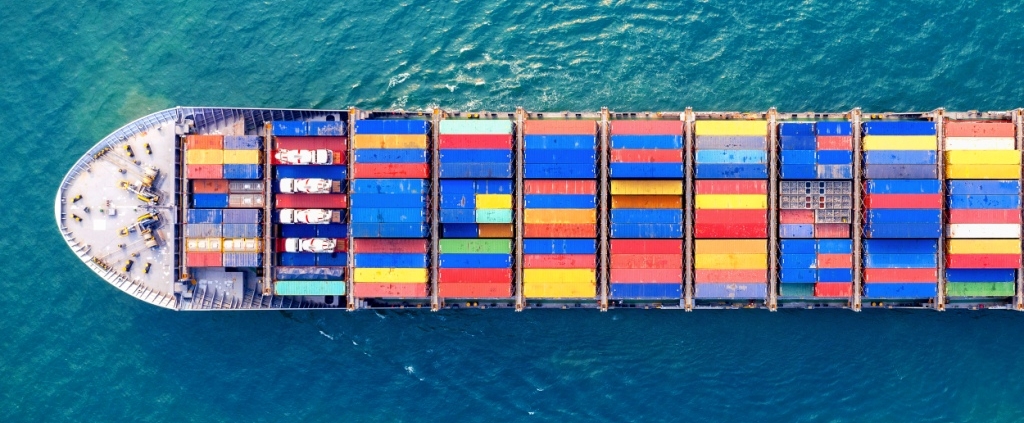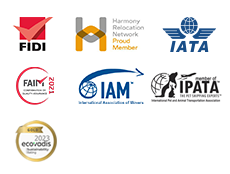The Trajectory of Ocean Shipping Rates: Trends and Challenges
The unprecedented surge in ocean freight costs observed during the pandemic is unlikely to resurface. Rates are currently experiencing a downward trend due to an oversupply of ships and the sluggish recovery of the global economy. Moreover, major global shipowners face challenges such as environmental regulations and the need for investments in Brazilian ports to strike a balance between costs and profitability. While logistics costs may result in higher shipping prices in Brazil, they are far from reaching the peaks of up to USD 12,000 witnessed in 2021 and 2022.
When people were confined to their homes in 2020, 2021, and part of 2022, global trade experienced a significant boost. This created a discrepancy between the available supply of ships and containers and the consumer demand for goods transported by them. Consequently, ocean freight became the only means of determining which orders would be shipped and which would not, as stated by Leandro Barreto, the managing director of Solve Shipping consulting firm. These inflated prices were also a consequence of the COVID-19 contamination among industry professionals.
Paulo Sérgio de Arruda Ignácio, the associate professor of Engineering at the State University of Campinas (UNICAMP) and coordinator of the Production Engineering Research Center (CENPRO), adds that prices were initially high in the first half of the previous year due to China’s lockdown. China, being the location where 25% of the world’s available containers were stranded during the peak of the health crisis, played a significant role in this situation.
Andrew Lorimer, the CEO of consulting firm Datamar, explains that the prolonged docking of ships during the height of the pandemic had a ripple effect. He describes how the disruption of ships’ schedules caused disturbances in the world’s logistics chain, which typically operates like clockwork, with containers depending on timely arrivals of ships at ports for loading, dispatching, and unloading. The quarantine measures disrupted this entire chain. Lorimer also mentions that the temporary surge in costs was partially caused by the blockage of the Suez Canal by the Ever Given vessel in Egypt in March 2021. The six-day obstruction led to navigation interruptions on one of the world’s busiest routes.
According to data from Datamar, the average freight cost of a 40-feet dry container from Shanghai, China, to Santos, Brazil, was usually between USD 2,000 and USD 3,000 before the pandemic. In 2021, the cost soared to USD 12,000 with some fluctuations but has now returned to USD 2,000. Barreto from Solve Shipping highlights that in some cases, shipping prices reached as high as USD 20,000 elsewhere.
Shipping prices are globally applicable rates determined by various factors. Ignácio explains that shipowners consider ship costs, the planned route, the presence of pirate or conflict danger zones, and the longest routes when calculating the freight charges.
However, other elements also contribute to these costs. Cristina Helena Mello, an economics professor at the Pontifical Catholic University of São Paulo (PUC-SP), points out that the exchange rate and port infrastructure are additional components. Mello emphasizes that shipping freight costs include heavy bulk fees, large bulk fees, an exchange rate adjustment factor, an ad-valorem tax based on transaction value, fuel surcharges, bottleneck surcharges, and additional port charges. Thus, fluctuations in the exchange rate and the post-pandemic economic recovery, combined with inadequate port infrastructure, lead to increased costs in bottleneck surcharges and additional port charges.
Following the end of the pandemic, freight prices plummeted to levels that now pose a threat to shipowners’ financial results. Lorimer explains that several factors contributed to this situation, including the war in Ukraine and the influx of new ships ordered during the pandemic’s price surge. To manage costs and profits, shipowners have even decommissioned vessels to reduce supply and consequently drive up freight costs.
Lorimer expects a slight increase in costs as the year-end approaches due to Christmas orders, which typically concentrate between August and October. This seasonal demand for container ships and ocean freight raises costs. Bulk carriers and oil tankers, on the other hand, calculate costs based on daily usage rates. Although their freight costs also surged significantly during the pandemic, the increase was not as dramatic as that of container ships.
Prices are anticipated to return to lower levels in the coming years. Lorimer predicts that the influx of new ships will continue to put pressure on freight costs. However, as the global economy shows positive signs, a growth trend is expected in 2024. Therefore, costs are forecasted to stabilize at levels similar to those before the pandemic, ranging from USD 1,500 to USD 3,000. However, this expectation only covers the next two or three years, as long-term projections are uncertain.
Challenges and opportunities arise with the introduction of larger ships into shipowners’ fleets. These vessels, which can transport over 20,000 TEUs (twenty-foot equivalent units), surpass the capacity of the smaller ships currently in operation in Brazil. However, the depth of Brazilian ports does not yet accommodate these larger vessels, posing challenges for shipowners, particularly in terms of freight costs.
Ignácio explains that goods imported from the East to Brazil are initially transported in large container ships from Asian ports, which then transfer the cargo to smaller ships at European ports before reaching the South American coast. The difficulty and additional time required for this transportation process result in an extra fee, contributing to increased freight costs in Brazil.
Mello from PUC-SP also highlights that a smaller infrastructure becomes more costly. Insufficient throughput leading to bottlenecks and subsequent overcharges, high port costs, increased labor costs, lack of technological intelligence, and storage limitations are all factors that drive up shipping costs.
Barreto believes that the establishment of regional mini-hubs from North to South Brazil is the most likely solution to address the current limitations compared to leading ports worldwide. He envisions the Northeast and South ports being able to dock and handle around 1 to 2 million TEUs, while Santos remains the primary port. Barreto explains that environmental legislation no longer permits 8,000-TEU ships due to their high emissions. Although 12,000-TEU ships are desirable, they cannot currently dock in Santos.
Regarding shipping routes to Arab countries, Brazil has direct routes for bulk carriers, particularly for goods originating from Brazil, as well as for oil tankers from the Middle East. According to Datamar data, Brazil’s exports to the Middle East and North Africa decreased by 8.1% year-to-date through February. The main products exported via ports were meats, followed by timber, cotton, coffee, tea, mate, spices, vegetable products, tobacco, and paper. The top importers from the region were the United Arab Emirates, Saudi Arabia, Turkey, Egypt, Iraq, Israel, and Jordan.
Conversely, Brazil mainly imported plastics, glass, textiles, fertilizers, and inorganic chemicals. Imports from the region increased by 13.2% year-to-date through February. The leading exporters to Brazil were Turkey, Saudi Arabia, Egypt, Israel, the UAE, Morocco, and Oman.




